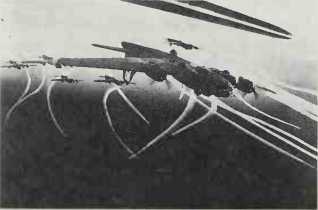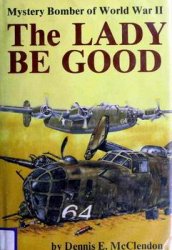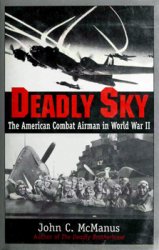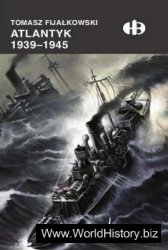Schlieffen plan. The war plan developed by Count Alfred von Schlieffen, Chief of the German General Staff from 1891 to 1905, was governed by the possibility that Germany might face a two-front war against France and Russia. Schlieffen envisaged that, by means of a wide sweep through neutral Belgium and the Dutch “Maastricht Appendix”, with the German right-wing armies then wheeling west of Paris, France could be defeated in a lightning campaign before Russia’s mobilization and deployment were complete. Schlieffen’s successor, von Moltke, modified the plan, weakening the right wing and abandoning the proposed movement through Holland, while the stress of battle in August 1914 imposed further changes. It is doubtful, however, whether the plan would have succeeded even in its original form. It took too little account of human exhaustion, overextended supply lines and inadequate communication systems; it also underestimated the speed of Russian mobilization and the strength of Belgian resistance. PJS.
Schmid, Maj Gen Josef (“Bep-po”) (b. l901). Ger. As head of Luftwaffe intelligence 1939, advocated air-dominated strategy by Germany against England; as head of Jagdkorps I in 1943—45 in northwest Europe, failed sufficiently to check either usaf bomber attacks by day or raf Bomber Command attacks by night on Germany.
Schmidt, Gen Harry (1886-1968). US. A Marine Corps officer since 1909, Schmidt commanded the 4th Marine Division in the assault on the Marshall Islands, and on Saipan, in 1944. Given command of V Amphibious Corps in July 1944, he led the formation in the operations on Tinian and Iwo Jima.
Schnaufer, Maj Heinz-Wolfgang
(1922-50). Ger. The top-scoring German night-fighter pilot with 121 victories, mostly over raf Halifaxes and Lancasters. Flying a Messerschmitt Bf 110, he destroyed 9 bombers in 24 hours on February 21 1945. He died after a motor accident in July 1950.
Schnee Eifel see ARDRNNES OFFENSIVE.
Scbrage Musik (“oblique music”). Slang term for effective German night fighter tactic in which the attack was made with a vertically upward-pointing gun from directly beneath the Lancaster or Halifax, which had no downward vision. The tactic was first used in the Peenemiinde raid on the night of August 17-18 1943.

B-17 Flying Fortress of usaaf
Schweinfurt, bombing of (1943
44). On October 14 1943, 291 B-17 Flying Fortresses of the US Eighth Air Force undertook a daylight “precision” attack upon the ballbearing plants in Schweinfurt. Sixty bombers were shot down over Europe, 17 returned irreparably damaged and over 100 with lesser damage. Destruction at the targets was considerable, but despite initial alarm in Germany, a way round the problems was soon found. Such a rate of casualties, if continued in the Eighth Air Force, would rapidly have exterminated it and therefore the Americans had either to abandon long-range daylight bombing or change its methods. The Schweinfurt raid prompted the latter course; most casualties were due to German fighters engaging the US bombers after they were out of the range of their own fighters. A solution was sought in a crash programme of long-range fighter production and a radical revision of day-bombing tactics.
The British Bomber Command night attack on April 26 1944, aimed at the town area associated with the ball-bearing plants, established another important point. Of the force dispatched, 9.3 percent failed to return and the Germans again quickly recovered. The policy of “selective area bombing”, which the Air Staff had forced upon a reluctant Harris, was shown in this instance to have failed, a fact which strengthened the c-in-c:’s argument for “general area bombing”. ANF.
Scire. Italian submarine that launched human torpedo crews against shipping in the Bay of Gibraltar,
1940-41, sinking one merchantman and damaging two. At Alexandria, December 1941, they disabled battleships Queen Elizabeth and Valiant. Scire was sunk in August 1942 while attempting to launch human torpedoes off Haifa, Palestine.
Scobie, Lt Gen Sir Ronald (1893
1969). Br. Commander 70th Division, besieged in Tobruk, 1941; Commander Land Forces Greece during British re-occupation, October 1944, and Greek communist rebellion, December 1944-January 1945.
Scott, Adm Sir Percy Moreton
(1853-1924). Br. One of the foremost gunnery experts in naval history. Commanding cruisers, he pioneered telescopic sighting and invented training devices - the “dotter”, simulating the ship’s roll; “loader”, for loading practice; and “deflection teacher”, simulating the horizontal movement of a target — that promoted “continuous aim” by keeping sights on target throughout the ship’s roll. Using this system, Scott’s gunners achieved around 80 percent hits to rounds fired, compared with a fleet average of about 30 percent, and almost doubled the rate of hits per heavy gun per minute. Appointed commander of gunnery school Excellent, 1903-05, and the Admiralty’s first Director of Target Practice, 1905-07, Scott took advantage of advances in electronics and of the “fire control tables” developed by Adm Sir Frederick Dreyer (1878-1956), to evolve the “director sight”: a command centre in the foretop of a dreadnought battleship from which a full broadside could be aimed and fired simultaneously. With the support of Fisher and Jellicoe, director firing was adopted by the Royal Navy from 1913. Retiring in 1913, Scott returned to active service in World War I, commanding London’s AA defences during the Zeppelin raids of 1915—16. RO’N.




 World History
World History









